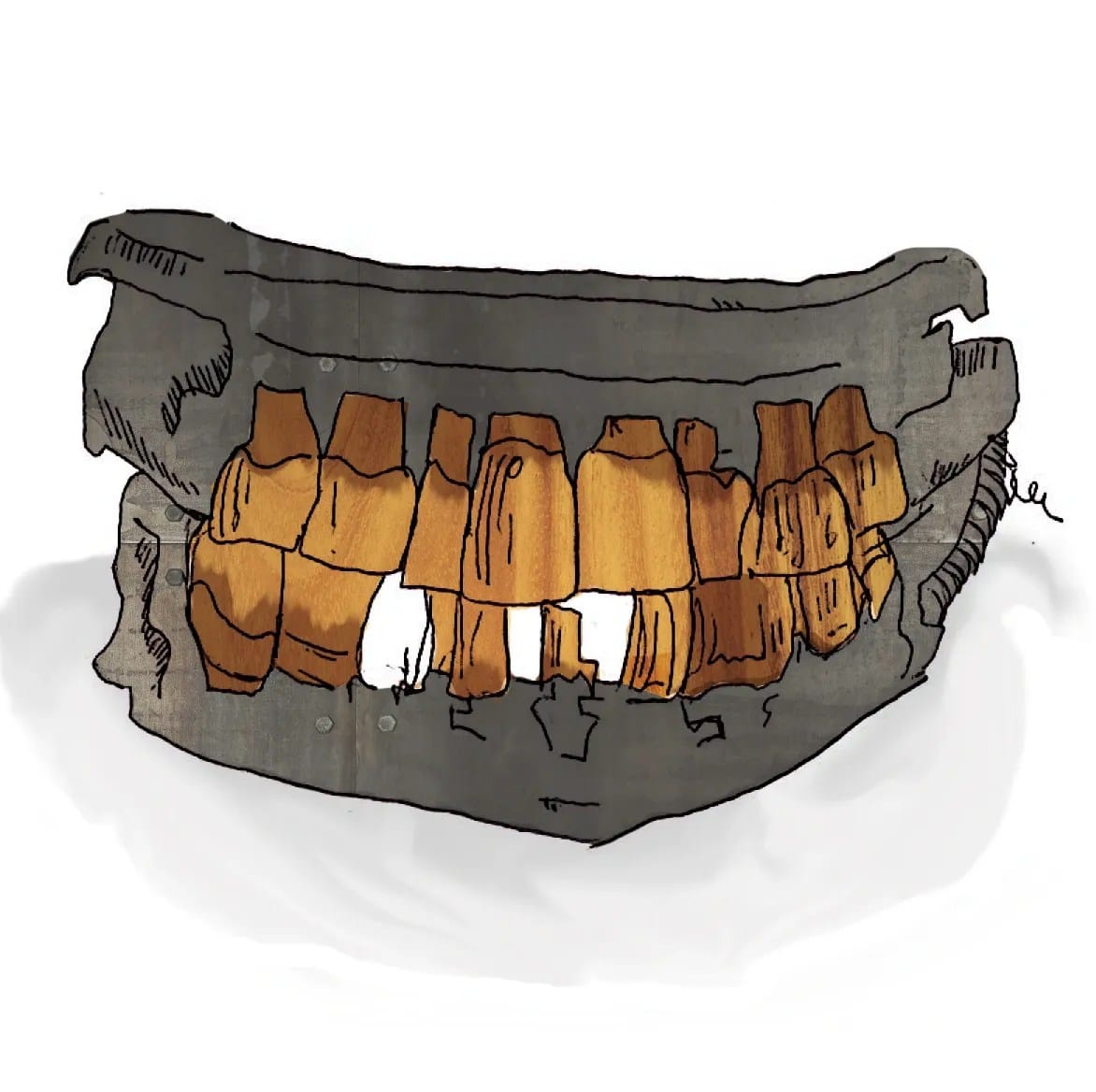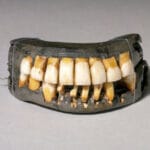Have you ever wondered if George Washington actually had wooden teeth? You’re not alone! This persistent myth has been circulating for centuries. Let’s delve into the real story of Washington’s dental woes, separating fact from fiction along the way.
Dispelling the Wooden Teeth Myth
It’s a tale as old as time (or at least as old as the United States): George Washington, the nation’s first president, sporting a set of wooden teeth. But, as with many historical anecdotes, the truth is far more interesting.
Washington, like many people in the 18th century, experienced severe dental problems throughout his life. This makes it highly likely that he suffered from constant toothaches and the distress of losing teeth, one by one. By the time he assumed the presidency, he had only one natural tooth remaining. Dentures were his saving grace, but contrary to popular belief, they were not carved from wood.
What Were Dentures Made of in the 1700s?
So, if not wood, what materials did dentists use to craft dentures in the 18th century? Prepare to be surprised! Instead of the modern materials we use today, early dentures were fashioned from a rather unsettling array of materials:
A Motley Mix of Materials:
| Material | Description |
|---|---|
| Ivory | Elephant tusks, walrus tusks, and even hippopotamus teeth were prized for their durability and resemblance to real teeth. |
| Gold | Primarily used for clasps and springs to secure the dentures, gold was a status symbol, showcasing wealth and access to luxury materials. |
| Human Teeth | While unsettling by today’s standards, using teeth from deceased individuals was a surprisingly common practice to create a natural look. |
| Animal Teeth | Teeth from cows, horses, and even walruses were readily available and more affordable than ivory, though less durable. |
| Bone | Typically cattle bone, carved bone provided a base for the dentures but was prone to cracking. |
| Lead | Easily molded, lead was used for denture bases, despite its known toxicity. |
From Crude to Complex: Denture Evolution
Early dentures of the 1700s were rudimentary, often involving carved bone or ivory with animal teeth wired or tied together. As you might imagine, these early attempts were ill-fitting, uncomfortable, and likely caused difficulty eating.
However, as the 18th century progressed, so did denture technology. Inventors like Nicholas Dubois de Chémant developed spring mechanisms that helped improve the fit and stability of dentures. Additionally, porcelain teeth began to emerge, offering a more natural appearance and improved hygiene compared to animal or human teeth.
The High Cost of a Smile
It’s important to note that dentures were a luxury in the 1700s, often only attainable by the wealthy. The materials used, particularly ivory and gold, came at a steep price. Dentures, therefore, became a status symbol, with a person’s smile reflecting their social standing.
The use of human teeth also presents significant ethical questions. Where did these teeth come from? Was consent given? While the answers remain unclear, this practice highlights the social inequalities and ethical complexities of the past.
Lessons from 18th-Century Dentistry
While the materials and methods of 18th-century dentistry might seem crude by today’s standards, they offer a fascinating window into the ingenuity and resourcefulness of our ancestors. The evolution of dentures, from rudimentary designs to more sophisticated mechanisms, exemplifies the human drive for progress and innovation.
George Washington’s Dentures: A Glimpse into History
Returning to George Washington, historical records indicate that his dentures were crafted from ivory, gold, and possibly even human teeth – a far cry from the wooden myth. These dentures, meticulously crafted by his dentist, John Greenwood, provide invaluable insights into Washington’s personal struggles, the medical challenges of the time, and the social customs surrounding dental care in the 18th century.
Did Benjamin Franklin Have Dentures?
While Benjamin Franklin, a contemporary of Washington, was known for his many talents – inventor, politician, scientist – there’s no existing evidence to suggest he ever wore dentures. It’s curious, considering Franklin’s detailed writings about his life, that he never mentioned dentures or significant dental problems.
It’s important to avoid conflating the experiences of these historical figures. While Washington’s dental woes were well documented, assuming Franklin faced similar challenges without evidence is misleading. This highlights the importance of relying on credible sources and avoiding historical conjecture.
What Did George Washington Look Like?
Beyond the myth of wooden teeth, what did George Washington actually look like? Portraits offer some clues, though they often presented an idealized version of the man.
While portraits depict a stately figure, with a strong jawline and piercing blue eyes, they reveal little about his personality or less formal appearance. Historical accounts describe Washington as possessing a “commanding presence,” yet also reserved and quiet in person.
Descriptions mention reddish-brown hair, often powdered white, blue-gray eyes, and pockmarked skin, likely from smallpox. His attire was consistently formal, reflecting the fashion of the 18th century, with powdered wigs, breeches, and waistcoats.
Unraveling the Myths and Mysteries
By separating fact from fiction, we gain a deeper appreciation for the realities of the past. While myths and legends persist, it’s through careful examination of historical evidence that we can truly understand the lives and experiences of figures like George Washington.
Remember: This article is intended for informational purposes and should not be taken as professional medical or historical advice. Always consult with qualified experts for accurate information.
Internal Links:
Have you ever wondered about the infamous El Chapo’s house? If so, click here to learn about the former drug lord’s lavish abode.
Did George Washington wear wooden teeth? His biographers have been curious about it for centuries, and they’ve found some surprising evidence.
- Unlock Elemental 2 Secrets: Actionable Insights Now - April 2, 2025
- Lot’s Wife’s Name: Unveiling the Mystery of Sodom’s Fall - April 2, 2025
- Photocell Sensors: A Complete Guide for Selection and Implementation - April 2, 2025
















